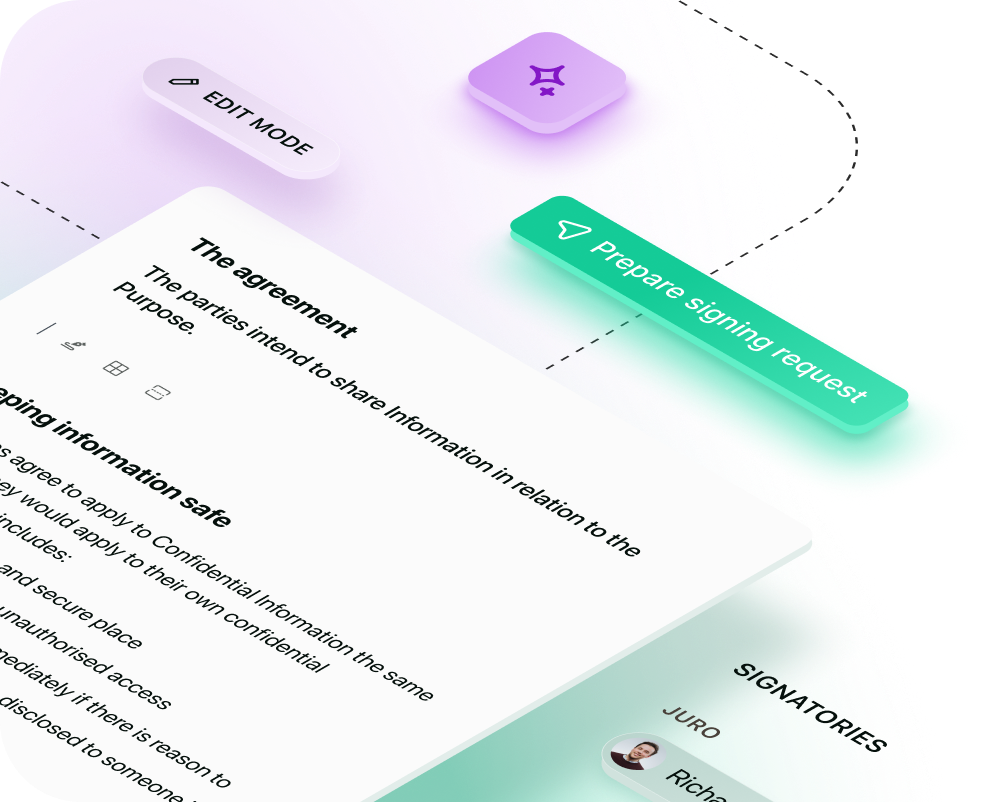Solutions
Customer Support
Resources
Use this commercial tenancy agreement to outline the terms for your business to rent property from a landlord for operational purposes.




Create and manage tenancy agreements more efficiently with this free template, enabling businesses to establish clear rental terms and conditions.
With the rise of commercial spaces and a hybrid working world often requiring businesses to rent smaller premises than before, tenancy agreements have become a staple in the corporate world.
But what are they, who should use one and how can you draft one?
A Tenancy Agreement, or lease agreement, is a legal contract between two businesses where one business agrees to rent property owned by another business. This type of agreement is essential for businesses that require commercial spaces, warehouses or other facilities.
These agreements ensure that both parties understand their rights and responsibilities, such as rent, maintenance, and other essential terms. They are crucial for protecting the interests of both the landlord and the tenant, ensuring smooth operations and preventing potential disputes.
Fixed-Term Lease: This is a lease agreement for a specific period, often ranging from a year to several years. It provides security for both parties as the terms are fixed and cannot be easily altered.
Month-to-Month Lease: This type of lease offers flexibility, allowing either party to terminate the agreement with proper notice, usually 30 days.
It's essential to understand the type of lease you're entering into and ensure it aligns with your business needs.
When you should use a tenancy agreement depends on your reason for hiring a space. Some of the most common reasons are:
Tenancy agreements have a fairly traditional formula and should include the following:
Though they are a fairly common, there are some challenges that may arise when drafting a tenancy agreement.
Firstly, staying updated with commercial leasing laws is crucial as they can change over time. It's important to make sure your agreement matches the latest rules.
It can also be difficult to meet the needs of both parties involved when creating such agreements, meaning there may be more negotiation involved than other contracts.
Finally, commercial leases often include detailed terms about price increases, renewals, and other factors. It takes time and effort to understand and discuss these terms properly.
Modern businesses are looking to automate routine contracts like B2B tenancy agreements. Automation can save time, reduce errors, and streamline the entire process. Platforms like Juro offer automated templates, making it easier to draft, review, and sign tenancy agreements.
Automate your tenancy agreements with Juro and experience a hassle-free, efficient contract management process that lets you focus more on building successful affiliate relationships, and less on routine admin work.
To find out more, hit the button below.
Juro is the #1-rated contract platform globally for speed of implementation.


Juro embeds contracting in the tools business teams use every day, so they can agree and manage contracts end-to-end - while legal stays in control.
Book your demo